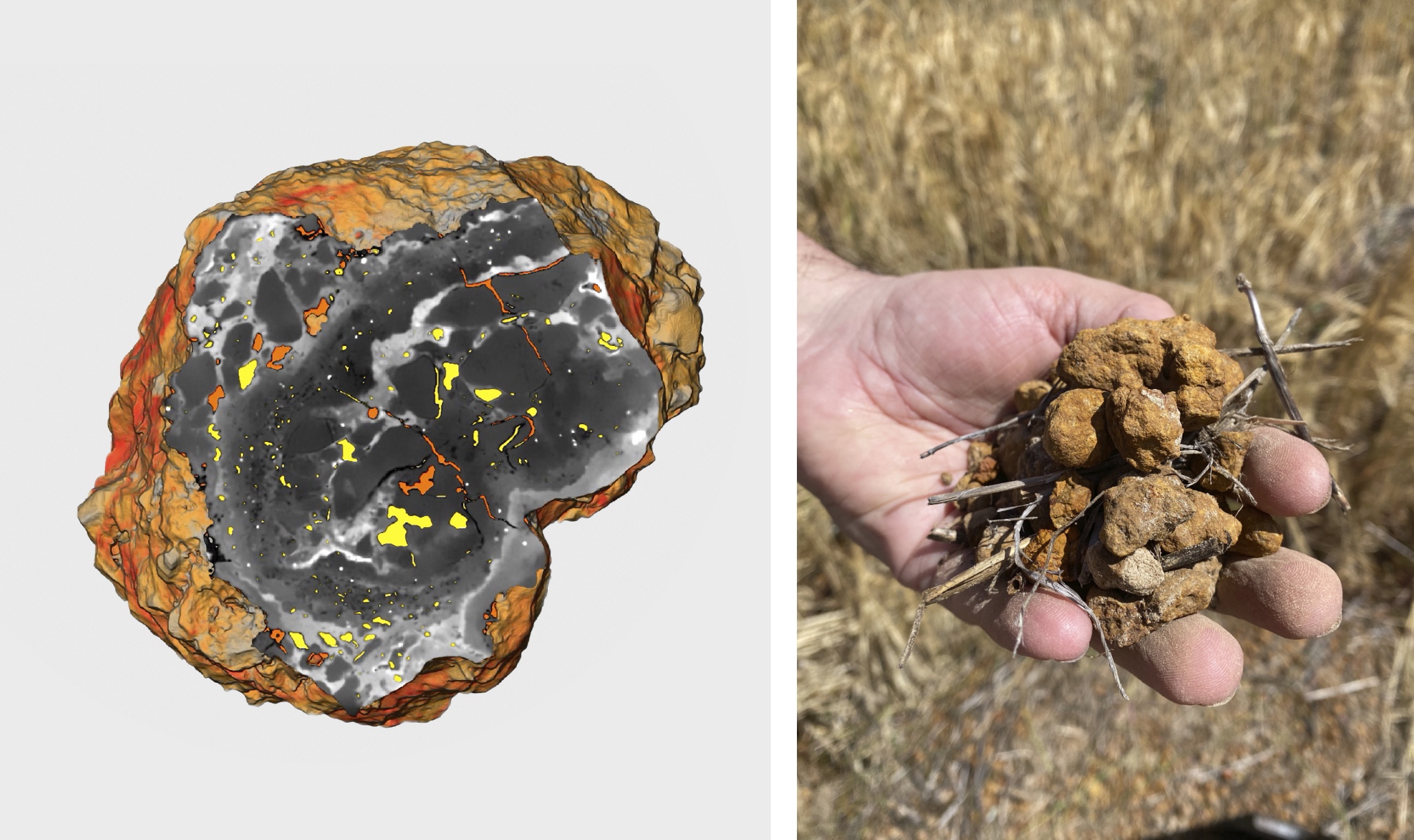In an ongoing research project between Prof. Daniel Murphy from SoilsWest at Murdoch University and the Grains Research and Development Corporation, researchers are using Microscopy Australia’s University of Western Australia facility to discover new information on gravel composition, water absorption and nutrient dynamics. Their aim is to unlock the potential and improve the management of this challenging soil type.
The research team accessed Microscopy Australia’s high-sensitivity analytical tools, including the nano-SIMS, and elemental analysis on the scanning electron microscope, to look at the chemical composition of around 400 gravel soil samples from around WA and SA. To complement the elemental studies, X-ray microtomography has allowed the team to see how water and nutrients move into the different gravels by visualising the interconnectedness of pores within individual gravel particles.

Their studies have revealed a lot of variation in gravel soils: they are not all the same. Gravels high in silica tend to be able to hold more water and nutrients whereas iron-dominated gravels tend to hold and release nitrogen well but hold onto phosphorus tightly, not releasing it to the crops. This explains why farmers see no improvement in their yields even when more phosphorus fertiliser is added.
This project is providing highly valuable information to help farmers understand and efficiently manage water and nutrient use on ironstone gravel soils to maximise their crop yields into the future.
February 27, 2022